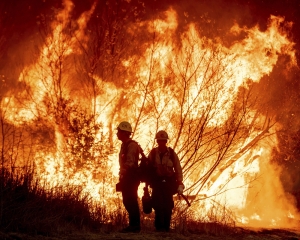The accelerating rate of climate change has resulted in fast-shifting and erratic monsoon patterns in India in the last decade (2012-2022) with approximately 30 per cent of the country's districts experiencing a notable increase in deficient rainfall years, while 38 per cent witnessed a rise in excessive rainfall years.
Flagging the notable shift in the monsoon patterns in India which is bound to have a severe impact on agriculture production, and livelihood as well as water availability, the study by the think-tank Council on Energy, Environment and Water (CEEW) has called for immediate adaptive measures and robust environmental policies.
Spanning 40 years, the study noted that monsoon rainfall increased in 55% of Indian tehsils in the last 10 years amid climate change while 11% of tehsils saw a decrease, which are located in the rain-fed Indo-Gangetic plain, Northeastern region in the country and upper Himalayan region. These areas are crucial for India’s agricultural output and contain fragile ecosystems particularly vulnerable to extreme climate events. Titled, “Decoding India’s Changing Monsoon Patterns,” the study is a first-of-its-kind granular analysis of rainfall in more than 4,500 tehsils across India covering 1982-2022.
“Majority of India is seeing a surge in southwest monsoon rainfall, with 55 per cent of ‘tehsils’ or sub-districts seeing a significant increase of more than 10 per cent in the last decade (2012-2022),” according to the study.
This includes tehsils in traditionally drier regions such as Rajasthan, Gujarat, central Maharashtra, and parts of Tamil Nadu. Out of these, nearly a quarter of the tehsils are seeing a pronounced rainfall rise of over 30 per cent during the June to September period. Moreover, according to the study, the increased rainfall in these tehsils frequently comes from short-duration, heavy rainfall, which often leads to flash floods.
“For instance, 31 per cent of Indian tehsils experienced an increase of four or more days of heavy rainfall per year in the last decade (in comparison to the previous 30 years) during the southwest monsoons. As 2023 was declared the hottest year on record globally, and 2024 is expected to continue that trend, the impacts of the climate crisis will be seen in the form of increased extreme weather events.
“For instance, in 2023, Chandigarh received nearly half of its total annual rainfall in just 50 hours, while Kerala encountered a nearly 60 per cent deficit in June (IMD 2023).
Dr Vishwas Chitale, Senior Programme Lead, CEEW, said, “As India readies for the 2024 Union Budget, it will be crucial to focus on future-proofing the economy against increasingly erratic rainfall patterns. The monsoons impact the food we eat, the water we drink, and also our energy transition. The study also provides openly-accessible tehsil-level rainfall information for decision-makers to assess risks at the local level.”
Shravan Prabhu, Research Analyst, CEEW, added, “Our research reveals that the Indian monsoons, which inherently show high variability, are seeing even more intense changes over the last decade, showcasing a swapping pattern. To effectively address these emerging challenges, the impacts of monsoon variability on key sectors such as agriculture, water, and energy should be mapped and integrated into climate action plans at all levels — from states to districts.”

























